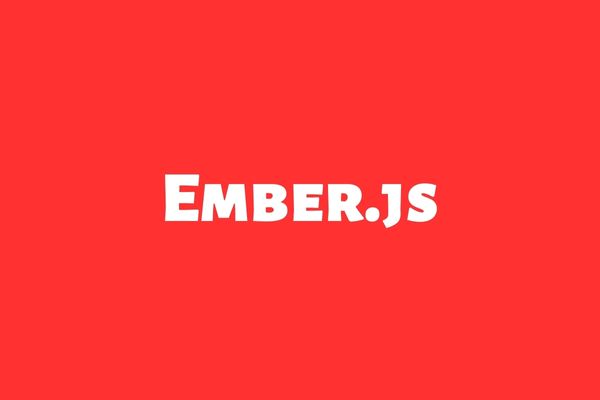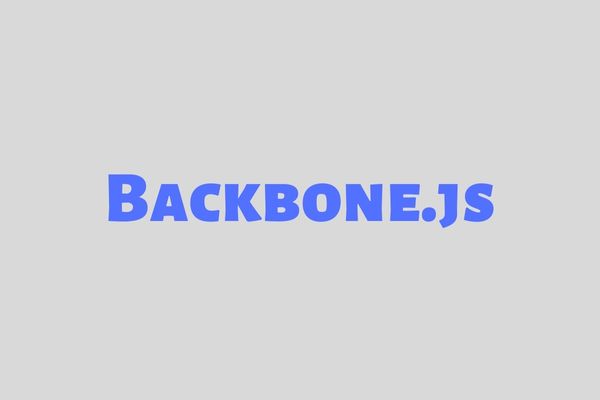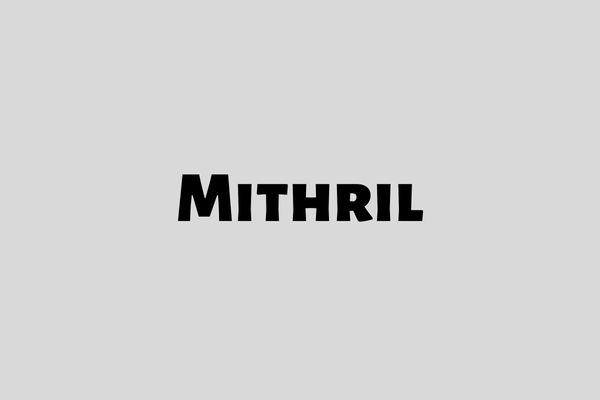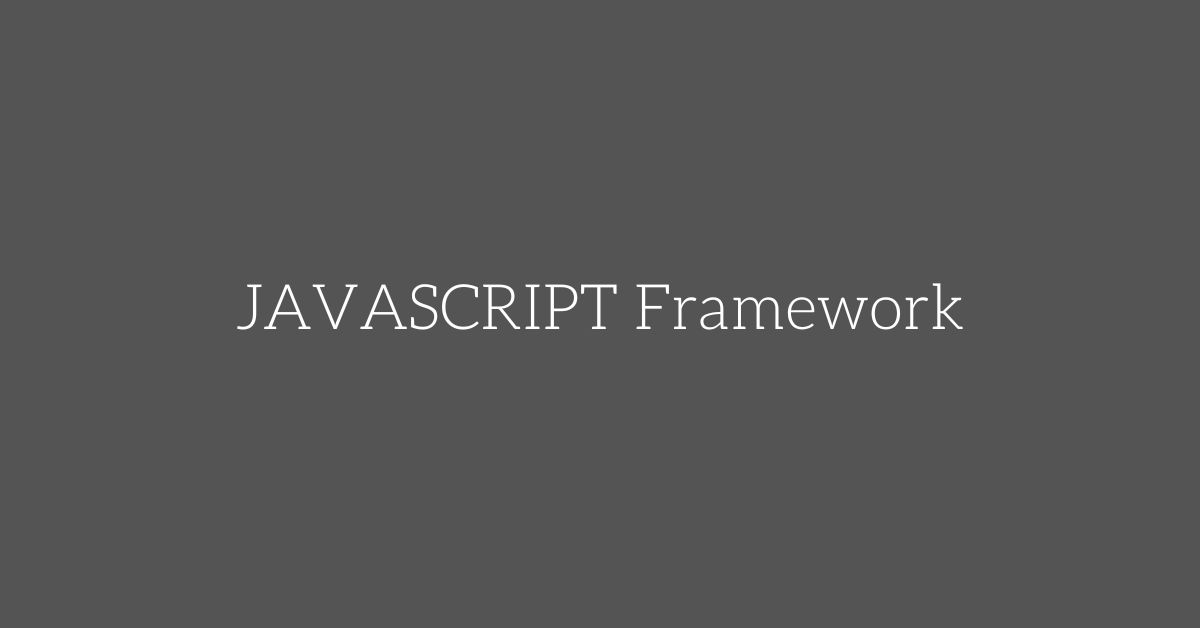JAVASCRIPT framework – Competition in the world of web development is fierce, and staying up to date with the latest technology and trends is crucial. One of the most popular areas of development is JavaScript, and there are numerous frameworks available to make developing web applications easier and more efficient. In this article, we will provide an extensive list of all the JavaScript frameworks available, along with their features and benefits.
1. AngularJS

AngularJS is a JavaScript framework maintained by Google. It is popular because it allows developers to build dynamic and responsive web applications quickly. The framework is based on the Model-View-Controller (MVC) architecture and uses HTML as the template language. AngularJS has a large community of developers, which means it is well-documented, and there are numerous plugins and extensions available. It is used for building dynamic, single-page web applications (SPAs).
AngularJS provides a number of features that make it a popular choice for web developers, including two-way data binding, dependency injection, and directives. Two-way data binding allows changes made in the user interface (UI) to be automatically reflected in the model, and vice versa, without the need for manual updates.
Dependency injection makes it easier to manage and test code by allowing components to be easily swapped out or updated. Directives provide a way to create custom HTML elements and attributes, making it easier to build complex, reusable UI components.
pros
- Two-way data binding: AngularJS offers two-way data binding, which allows for easier and faster synchronization between the view and the model. This means that changes made in the view are instantly reflected in the model and vice versa, making development faster and more efficient.
- Modular architecture: AngularJS has a modular architecture, allowing developers to create complex web applications by combining different modules. This modularity helps in the easy maintenance and scalability of the application.
- Dependency injection: AngularJS provides dependency injection, which allows for better testing and easier development. This means that AngularJS automatically injects required services or objects into components, making the code more maintainable.
- Declarative programming: AngularJS allows for declarative programming, which simplifies the code and makes it more readable. This helps in reducing the chances of errors and improves the overall quality of the code.
- Large community: AngularJS has a large community of developers who contribute to the development and maintenance of the framework. This community provides a wide range of resources, including tutorials, documentation, and open-source libraries, making it easier for developers to learn and use the framework.
Cons
- Steep learning curve: AngularJS has a steep learning curve, especially for developers who are new to the framework or to web development in general. The framework has a complex syntax and architecture, which can take time to understand.
- Performance issues: AngularJS is known to have performance issues, especially when dealing with large and complex applications. The two-way data binding feature can also slow down the application and affect its performance.
- Compatibility issues: AngularJS is not backward-compatible with previous versions, which means that developers need to update their applications to the latest version to take advantage of new features and bug fixes.
- Lack of flexibility: AngularJS is a rigid framework, and developers need to follow its conventions and rules strictly. This can limit the flexibility and creativity of developers, especially when dealing with non-standard requirements.
- Limited mobile support: AngularJS was not designed with mobile devices in mind, and mobile support can be limited. This can lead to issues with responsive design and mobile-specific functionality.
2. React

React is a JavaScript library maintained by Facebook. It is used to build user interfaces and is popular because of its simplicity and ease of use. React uses a virtual DOM, which means that changes to the UI are made efficiently without needing to update the entire page. React is also highly modular, which means that developers can easily reuse components in different parts of their applications.
pros
- Component-based architecture: React is a component-based library, which means that developers can create small, reusable components and combine them to create complex user interfaces. This approach improves the modularity and maintainability of the code.
- Virtual DOM: React uses a virtual DOM, which allows for faster and more efficient updates to the user interface. This means that React applications can handle large amounts of data and complex user interactions without slowing down or crashing.
- Easy to learn: React has a simple and easy-to-learn syntax, which makes it easier for developers to get started with the library. Additionally, React has excellent documentation and a large community of developers who provide support and resources.
- Large community: React has a large and active community of developers who contribute to the development and maintenance of the library. This community provides a wide range of resources, including tutorials, documentation, and open-source libraries, making it easier for developers to learn and use the library.
- Excellent performance: React is designed for performance, and its use of virtual DOM and efficient updates ensure that React applications are fast and responsive.
Cons
- Steep Learning Curve: React can be challenging for beginners to learn. It requires a solid understanding of JavaScript, as well as some additional tools and libraries such as JSX, Babel, and Webpack.
- Boilerplate Code: Building a React application often involves writing a lot of boilerplate code, which can make the development process longer and more complicated.
- Limited Functionality: React is primarily a user interface library and does not provide built-in functionality for features such as routing and state management. Developers must use additional libraries to implement these features.
- Performance Issues: React can be slower than other libraries or frameworks, especially when dealing with large and complex applications.
- Dependency Management: React has a large number of dependencies, which can create versioning and compatibility issues.
- Lack of Convention: React does not provide a standardized way of organizing code, which can lead to inconsistent code across projects and teams.
3. Vue.js

Vue.js is a JavaScript framework that is gaining in popularity because of its simplicity and ease of use. It is designed to be easy to understand and use, which makes it a great choice for developers who are new to web development. Vue.js is also highly modular, which means that developers can easily reuse components in different parts of their applications.
pros
- Easy to Learn: Vue.js has a simple and intuitive syntax, making it easy for developers to learn and get started with. Its documentation is also well-written and comprehensive.
- Lightweight: Vue.js is a lightweight framework, which means it loads quickly and performs well. This makes it a good choice for building single-page applications that require fast loading times.
- Flexible: Vue.js can be used for both small and large-scale projects. It can also be easily integrated with other libraries and existing projects.
- Reactive Data Binding: Vue.js provides reactive data binding, which means that changes to the data are automatically reflected in the UI. This makes it easier to create dynamic and responsive applications.
- Component-Based: Vue.js is based on the concept of components, which makes it easier to organize and reuse code. Components can be easily created and used across different projects.
- Devtools: Vue.js provides a set of developer tools that make it easier to debug and optimize Vue.js applications. These tools include a browser extension, a devtools panel, and a standalone Electron app.
Cons
- Limited Ecosystem: Compared to other popular frameworks such as React and Angular, Vue.js has a smaller ecosystem of third-party libraries and tools. This can make it more challenging to find solutions for certain problems.
- Steep Learning Curve for Advanced Features: While Vue.js is easy to learn for basic usage, more advanced features like Vuex (state management) and Vue Router (routing) may require a steeper learning curve.
- Performance Issues: While Vue.js is generally considered lightweight and fast, it may struggle with large and complex applications. This can lead to slower loading times and reduced performance.
- Lack of Official Support: Vue.js is an open-source project, and while it has a large and active community, it does not have the same level of official support as some other frameworks. This can lead to slower updates and a less robust ecosystem.
- Dependency Management: Like React, Vue.js has a large number of dependencies, which can create versioning and compatibility issues.
4. Ember.js

Ember.js is a JavaScript framework that is designed to help developers build ambitious web applications. It is based on the Model-View-ViewModel (MVVM) architecture and uses a convention over configuration approach, which means that developers don’t need to spend time configuring their applications. Ember.js also has a large community of developers, which means that it is well-documented, and there are numerous plugins and extensions available.
pros
- Convention over Configuration: Ember.js follows the principle of convention over configuration, which means that it has predefined rules and conventions that allow developers to create applications with less code and configuration. This helps in reducing the development time and makes it easier to maintain the code.
- Two-way Data Binding: Ember.js provides two-way data binding, which means that any change in the data is reflected in the UI, and any change in the UI is reflected in the data. This helps in creating dynamic and responsive user interfaces.
- Component-based Architecture: Ember.js follows a component-based architecture, which means that applications are broken down into smaller reusable components. This makes it easier to develop, test, and maintain the code.
- Built-in Testing: Ember.js provides built-in testing support, which means that developers can easily write and run tests for their applications. This helps in ensuring that the application is functioning as expected and reduces the risk of bugs.
- Ember CLI: Ember.js comes with a command-line interface (CLI) tool that makes it easy to create, build, and manage Ember.js applications. The Ember CLI provides a set of tools and generators that automate common development tasks and make it easier to get started with Ember.js.
- Active Community: Ember.js has a large and active community of developers who contribute to its development, documentation, and support. This community provides resources and support to developers, making it easier to learn and use Ember.js.
Cons
- Steep Learning Curve: Ember.js has a steep learning curve, which means that it can take some time for developers to become proficient in using it. The framework has a large number of concepts and conventions that need to be understood before developing an application with it.
- Complexity: Ember.js can be more complex than other JavaScript frameworks, which can make it challenging for developers who are new to web development. The framework’s conventions and concepts can take some time to understand and apply properly.
- Performance: Ember.js can have performance issues with large-scale applications or when there are frequent changes to the UI. This is because the two-way data binding can create additional overhead and slow down the application.
- Opinionated: Ember.js is an opinionated framework, which means that it has specific ideas about how an application should be structured and developed. This can limit the flexibility of developers who want to take a different approach to building an application.
- Documentation: While Ember.js has extensive documentation, some developers have found it to be incomplete or difficult to navigate. This can make it challenging for developers who are new to the framework to get started.
5. Backbone.js

Backbone.js is a lightweight JavaScript framework that is designed to help developers build scalable web applications. It is based on the Model-View-Presenter (MVP) architecture and uses a minimal set of conventions, which means that developers can easily customize their applications. Backbone.js is also highly modular, which means that developers can easily reuse components in different parts of their applications.
pros
- Lightweight: Backbone.js is a lightweight framework, which means that it has a small footprint and requires minimal setup. This makes it a good choice for small to medium-sized applications.
- Flexible: Backbone.js is a flexible framework that allows developers to use it in a variety of ways. It doesn’t force developers to follow a specific architecture or structure, which gives them more freedom to develop applications in their own way.
- Models and Collections: Backbone.js provides models and collections, which make it easy to work with data in the application. Models represent individual objects, and collections represent groups of objects, making it easy to manipulate and manage data.
- Event-driven: Backbone.js is an event-driven framework, which means that it triggers events in response to user actions or changes in the data. This makes it easy to create dynamic and responsive user interfaces.
- RESTful API Integration: Backbone.js integrates well with RESTful APIs, making it easy to fetch and save data from a server. This makes it easier to develop applications that interact with backend services.
- Active Community: Backbone.js has an active community of developers who contribute to its development, documentation, and support. This community provides resources and support to developers, making it easier to learn and use Backbone.js.
Cons
- Lack of Structure: Backbone.js does not provide a specific structure or architecture for building applications. This can make it challenging for developers who are new to the framework to know where to start or how to organize their code.
- Steep Learning Curve: Backbone.js has a steep learning curve, which means that it can take some time for developers to become proficient in using it. The framework requires developers to understand its core concepts and to be comfortable with JavaScript.
- Boilerplate Code: Backbone.js requires developers to write more boilerplate code than other frameworks. This can make it time-consuming and repetitive to create common functionality, such as event listeners and data bindings.
- Limited Functionality: Backbone.js is a lightweight framework, which means that it has limited functionality compared to other frameworks. Developers may need to rely on third-party libraries or plugins to add additional functionality to their applications.
- Backward Compatibility: Backbone.js has limited backward compatibility, which means that newer versions of the framework may not be compatible with older code. This can make it challenging for developers to upgrade their applications to newer versions of Backbone.js.
6. Meteor

Meteor is a JavaScript framework that is designed to help developers build real-time web applications. It is based on Node.js and uses a full-stack approach, which means that developers can build both the client and server side of their application using JavaScript. Meteor is also highly modular, which means that developers can easily reuse components in different parts of their applications.
pros
- Real-time functionality: Meteor provides built-in real-time functionality, allowing data to be instantly updated across multiple clients. This makes it easy to create applications that require real-time collaboration and communication.
- Full-stack framework: Meteor is a full-stack framework that includes both front-end and back-end development tools. This allows developers to build complete applications with a single framework, reducing the need for additional libraries or tools.
- Easy to learn: Meteor is easy to learn for developers who are already familiar with JavaScript. It uses familiar concepts like callbacks and promises, making it easy to pick up and get started with.
- Large package ecosystem: Meteor has a large ecosystem of packages and plugins that can be easily integrated into an application. This makes it easy to add additional functionality to an application without having to write code from scratch.
- Cross-platform compatibility: Meteor is compatible with a variety of platforms, including web, mobile, and desktop. This makes it easy to build applications that can be accessed from a variety of devices and platforms.
- Active community: Meteor has a large and active community of developers who contribute to its development and provide support through forums, documentation, and open-source packages.
Cons
- Limited scalability: Meteor’s real-time functionality can make it difficult to scale applications to handle large numbers of users. This can be a problem for applications that need to handle high traffic volumes or large amounts of data.
- Limited flexibility: Meteor is a full-stack framework, which means that it may not be as flexible as other frameworks that allow developers to choose their own tools and libraries. This can make it difficult to customize an application or to integrate it with other tools or services.
- Large footprint: Meteor has a relatively large footprint, which can make it slower to load and use than other frameworks. This can be a problem for applications that require fast load times or that need to run on low-powered devices.
- Steep learning curve: While Meteor is easy to learn for developers who are already familiar with JavaScript, it can have a steep learning curve for beginners. This is because it has its own unique concepts and syntax that may take time to master.
- Backward compatibility: Meteor has limited backward compatibility, which means that newer versions of the framework may not be compatible with older code. This can make it challenging for developers to upgrade their applications to newer versions of Meteor.
7. Aurelia

Aurelia is a JavaScript framework that is designed to help developers build scalable web applications. It is based on the Model-View-ViewModel (MVVM) architecture and uses a convention over configuration approach, which means that developers don’t need to spend time configuring their applications. Aurelia is also highly modular, which means that developers can easily reuse components in different parts of their applications.
pros
- Modular architecture: Aurelia is built on a modular architecture, which means that developers can easily add or remove functionality as needed. This makes it easy to create custom applications that meet specific requirements.
- High performance: Aurelia is designed for high performance, with fast rendering times and minimal overhead. This makes it ideal for building responsive and efficient web applications.
- Extensive documentation: Aurelia has extensive documentation and a supportive community, which makes it easy for developers to learn and get started quickly.
- Two-way data binding: Aurelia uses two-way data binding, which means that changes to the model are automatically reflected in the view, and vice versa. This makes it easy to create dynamic and responsive user interfaces.
- TypeScript support: Aurelia supports TypeScript, which is a statically typed version of JavaScript. This makes it easier to write and maintain code and can help prevent errors and bugs.
- Flexible routing: Aurelia offers flexible routing options, including both traditional and hierarchical routing. This makes it easy to create complex applications with multiple views and pages.
Cons
- Steep learning curve: Aurelia has a steep learning curve compared to some other JavaScript frameworks, which can make it challenging for new developers to get started.
- Small community: While Aurelia has a supportive community, it is relatively small compared to some other JavaScript frameworks. This can make it more difficult to find resources and support for troubleshooting issues.
- Limited tooling: Aurelia has limited tooling and fewer plugins and extensions compared to some other JavaScript frameworks. This can make it more difficult to customize and extend applications.
- Limited popularity: Aurelia is less popular than some other JavaScript frameworks, which can make it more difficult to find developers with Aurelia skills or to find companies that use Aurelia.
- Limited backward compatibility: Aurelia has limited backward compatibility, which means that newer versions of the framework may not be compatible with older code. This can make it challenging for developers to upgrade their applications to newer versions of Aurelia.
8. Polymer

Polymer is a JavaScript library that is designed to help developers build web components. It is based on the Web Components standard, which means that developers can easily create reusable and customizable components. Polymer is also highly modular, which means that developers can easily reuse components in different parts of their applications.
pros
- Reusability: Polymer allows developers to create custom UI components that can be reused across different projects and applications. This makes it easy to maintain consistency across applications and to save time when building new projects.
- Flexibility: Polymer is a flexible library that can be used with other libraries and frameworks, such as Angular and React. This makes it easy to integrate Polymer into existing applications and to take advantage of the benefits of Web Components.
- Interoperability: Polymer’s use of Web Components makes it easy to create components that can work with other web technologies and frameworks, such as custom elements and Shadow DOM. This makes it possible to create powerful and flexible applications that work seamlessly with other web technologies.
- Easy to learn: Polymer is relatively easy to learn compared to some other JavaScript libraries and frameworks. This is because it uses familiar HTML syntax and has a simple API that is easy to understand and use.
- Fast development: Polymer’s focus on reusable components and simple API can help developers build applications more quickly and efficiently. This can save time and reduce development costs for complex projects.
Cons
- Limited browser support: Polymer relies on the use of Web Components, which are not fully supported by all web browsers. This can limit the reach and compatibility of applications built with Polymer.
- Learning curve: While Polymer is relatively easy to learn compared to some other JavaScript libraries and frameworks, it still has a learning curve that may be challenging for some developers.
- Performance issues: Because Polymer relies on JavaScript to create and render components, there may be performance issues on some devices or in some browsers. This can be particularly problematic for mobile devices or older browsers.
- Limited community support: While Polymer has a supportive community, it is smaller than some other JavaScript libraries and frameworks. This can make it more difficult to find resources and support for troubleshooting issues.
- Complex architecture: Polymer’s architecture can be complex and difficult to understand, particularly for developers who are new to web components and related technologies.
9. Mithril

Mithril is a lightweight JavaScript framework that is designed to help developers build scalable web applications. It is based on the Model-View-Controller (MVC) architecture and uses a minimal set of conventions, which means that developers can easily customize their applications. Mithril is also highly modular, which means that developers can easily reuse components in different parts of their applications.
pros
- Simplicity: Mithril is designed to be simple and easy to use. It has a small API that can be learned quickly, making it a good choice for developers who want to get started quickly.
- Performance: Mithril is lightweight and fast, making it a good choice for building high-performance web applications. It is designed to minimize DOM updates and provide efficient rendering.
- Scalability: Mithril is designed to be modular and flexible, making it a good choice for building large-scale applications. It supports a range of features, such as routing, components, and state management.
- Compatibility: Mithril is compatible with a wide range of browsers and platforms, making it a good choice for building cross-platform applications.
- Community: Mithril has an active and supportive community of developers who contribute to its development and provide support to other developers. This community can be a valuable resource for developers who are new to the framework.
Cons
- Limited Adoption: While Mithril has a dedicated following, it is not as widely adopted as some other popular JavaScript frameworks, such as React or Vue. This means that finding resources and support can be more difficult, and it may not be the best choice for projects that require a larger developer community.
- Steep Learning Curve for Beginners: While Mithril is designed to be simple and easy to use, it can still have a steep learning curve for developers who are new to the framework. The small API and focus on performance can make it more challenging to get started, and developers may need to spend more time learning the framework before they can be productive.
- Limited Tooling: Mithril has a smaller ecosystem of tooling and plugins compared to more popular frameworks, which can make it more challenging to find solutions for specific problems. Developers may need to spend more time building custom solutions or working around limitations.
- Limited Documentation: While Mithril’s documentation is comprehensive, it may not be as user-friendly as some other frameworks. Developers may need to spend more time reading and understanding the documentation before they can effectively use the framework.
- Smaller Community: While Mithril has an active and supportive community, it is not as large as some other popular frameworks. This means that finding help and resources can be more challenging, and there may be fewer third-party plugins and libraries available.
Conclusion
In conclusion, JavaScript frameworks are an essential part of modern web development. They provide developers with the tools they need to create dynamic and responsive web applications quickly and efficiently. There are numerous frameworks available, each with its own strengths and weaknesses.
In this article, we have provided a comprehensive list of all the JavaScript frameworks available, along with their features and benefits. From AngularJS and React to Vue.js and Polymer, developers have plenty of options to choose from. It is important to choose the framework that best suits the needs of your application and your development team.
Ultimately, the choice of the framework will depend on the specific requirements of your project, your experience with different frameworks, and the level of support and documentation available. By staying up to date with the latest technology and trends, developers can ensure that they are building web applications that are scalable, efficient, and user-friendly.
FAQs
Q: What are the benefits of using a JavaScript framework?
A: JavaScript frameworks can help developers save time and effort by providing pre-built solutions for common development tasks, such as DOM manipulation, event handling, and data management. They can also improve code organization, performance, and maintainability.
Q: What JavaScript frameworks are discussed on the webpage?
A: The webpage discusses several popular JavaScript frameworks, including React, Vue, Angular, Ember, Backbone, and Mithril.
Q: What is React?
A: React is a popular JavaScript library for building user interfaces. It is known for its component-based architecture, performance, and ease of use.
Q: What is Vue?
A: Vue is a progressive JavaScript framework for building user interfaces. It is known for its simplicity, performance, and ease of integration with other libraries and frameworks.
Q: What is Angular?
A: Angular is a comprehensive JavaScript framework for building web applications. It is known for its powerful features, including two-way data binding, dependency injection, and declarative templates.
Q: What is Ember?
A: Ember is a JavaScript framework for building ambitious web applications. It is known for its convention over configuration approach, powerful routing system, and rich ecosystem of addons and plugins.
Q: What is Backbone?
A: Backbone is a lightweight JavaScript framework for building web applications. It is known for its minimalistic approach, flexibility, and ease of integration with other libraries and frameworks.
Q: What is Mithril?
A: Mithril is a JavaScript framework for building user interfaces. It is known for its simplicity, performance, and small size.
Q: What are the strengths of Mithril?
A: The strengths of Mithril include its simplicity, performance, scalability, compatibility, and active community.
Q: What are the weaknesses of Mithril?
A: The weaknesses of Mithril include its limited adoption, steep learning curve for beginners, limited tooling, limited documentation, and smaller community.
Q: How can I decide which JavaScript framework to use?
A: The choice of JavaScript framework depends on several factors, including the project requirements, the team’s expertise, the available resources and time, and the desired features and performance. The webpage at makemychance.com/javascript-framework/ provides a useful comparison of various frameworks to help you make an informed decision.
[responsivevoice_button]
Arsalan Malik is a passionate Software Engineer and the Founder of Makemychance.com. A proud CDAC-qualified developer, Arsalan specializes in full-stack web development, with expertise in technologies like Node.js, PHP, WordPress, React, and modern CSS frameworks.
He actively shares his knowledge and insights with the developer community on platforms like Dev.to and engages with professionals worldwide through LinkedIn.
Arsalan believes in building real-world projects that not only solve problems but also educate and empower users. His mission is to make technology simple, accessible, and impactful for everyone.



